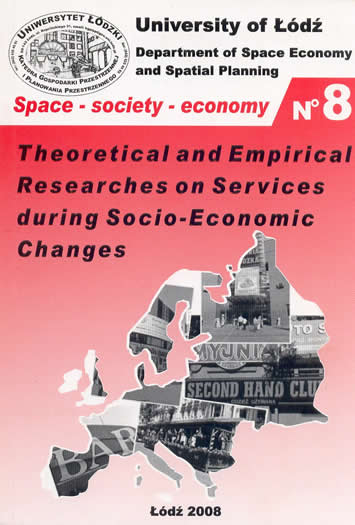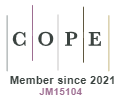Wykorzystanie pozycjonowania produktu w działalności przedsiębiorstw usługowych (w świetle wyników badań)
DOI:
https://doi.org/10.18778/1733-310.08.03Abstrakt
The survey shows that, on average, the product positioning is at all used by every second company, whilst every fifth company positions most of its products and only every tenth company positions all of its products. Generally saying, there are two positioning methods which are used by service companies. A method of product positioning, most often used by service companies (i.e. in almost 60% cases), consists in the creation of impression that their product is unique and unlike any other product offered on the market. The frequency distribution of the application of that positioning method is identifiable and characteristic. The method is used definitely more often by service companies operating on markets which are being established and developed at a local or country scale and on which changes are significant but their pace is slow and competition only moderate. The method is used predominantly by small or medium-size companies whose capital is mostly of domestic origin and who offer services to a selected segment. These are companies that have a significant position on the market and assess their financial standing as very good or weak. Subsequently, the said method of positioning is definitely much rarer in the practice of service companies operating on established markets characteristic of significant and quick changes and strong competition. These companies are large businesses whose capital is mostly of foreign origin and who satisfy the requirements of all customers and assess their financial standing as good. Positioning by taking the position of a product ideal for everybody is used, on average, by every third service company. The frequency distribution of the application of that positioning method is characteristic. The method is definitely more often used by companies operating on established or shrinking local markets where changes are insignificant and slow whilst competition is weak. The method is more often used by large companies whose capital is mostly of foreign origin and who satisfy the requirements of all customers and who have the leading position on the market and assess their financial standing as very weak. And subsequently, the method of positioning is definitely much rarer in the practice of companies operating on domestic markets characteristic of significant changes – whether quick or slow. These are small and medium-size companies whose capital is mostly of domestic origin and who satisfy the requirements of customers from selected segments, have a significant position on the market, and asses their financial standing as very good. These conclusions are based on the results of a survey conducted within the framework of the State Committee for Scientific Research (KBN) grant: “Marketing Strategies for the Creation of the Value of Companies”. The key tool for the collection of information was a questionnaire distributed by Internet. 52 service companies participated in the survey and information provided by them constitutes the basis on which the aforementioned theses are founded.
Pobrania
Bibliografia
Czubała A., Jonas A., Smoleń T., Wiktor J.W., Marketing usług, Oficyna Ekonomiczna, Kraków 2006.
Google Scholar
Decyzje marketingowe w przedsiębiorstwie, (red.) Mazur J., Difin, Warszawa 2002.
Google Scholar
Garbarski L., Rutkowski I., Wrzosek W., Marketing. Punkt zwrotny nowoczesnej firmy, PWE, Warszawa 2002.
Google Scholar
Hadrian P., Rawski M., Cel i metoda badań, [w:] Marketingowe strategie budowania wartości przedsiębiorstwa, (red.) Czubała A., Akademia Ekonomiczna w Krakowie, Kraków 2006.
Google Scholar
Kotler P., Marketing. Analiza, planowanie, wdrażanie i kontrola, Gebether & Ska, Warszawa 1994.
Google Scholar
Mazur J., Zarządzanie marketingiem usług, Difin, Warszawa 2001.
Google Scholar
Mazurek-Łopacińska K., Zachowania nabywców jako podstawa strategii marketingowej, Wydawnictwo AE im. O. Langego we Wrocławiu, Wrocław 2001.
Google Scholar
Payne A., Marketing usług, PWE, Warszawa 1997.
Google Scholar
Przybyłowski K., Hartley S, W., Kerin R.A., Rudelius W., Marketing, Dom Wydawniczy ABC, Warszawa 1998.
Google Scholar
Sargeant A., Marketing w organizacjach non-profit, Oficyna Ekonomiczna, Kraków 2004.
Google Scholar
Pobrania
Opublikowane
Jak cytować
Numer
Dział
Licencja

Praca jest udostępniana na licencji Creative Commons Attribution-NonCommercial-NoDerivatives 3.0 Unported License.









